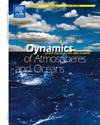两种类型的El Niño事件对斯里兰卡春季地面气温的影响
IF 2
4区 地球科学
Q2 GEOCHEMISTRY & GEOPHYSICS
引用次数: 0
摘要
El Niño事件与斯里兰卡(SL)地面气温(SAT)之间的关系已被充分记录。然而,两种不同类型的El Niño口味对SL季节性SAT变异性的影响仍有待深入研究。因此,为了确定两种不同类型的El Niño对SL上空SAT的影响,我们分析了1981 - 2020年的再分析和观测数据集。本次研究主要集中在El Niño事件衰减期的北方春季。在中太平洋(CP) El Niño事件衰减阶段,南亚春季存在强烈的SAT变冷,而在东太平洋(EP) El Niño事件衰减阶段,南亚春季强烈的SAT变暖尤为明显。研究发现,北太平洋西部反气旋(WNPA)向西移动的南侧延伸的东风导致了南太平洋和印度东海岸上空的低层辐合。这导致云层条件增强,入射短波辐射减少,从而导致CP El Niño事件期间的强烈冷却。相反,在EP El Niño期间,西西北低压东移,东风被限制在赤道附近,这有助于孟加拉湾(BoB)上空反气旋环流的发展。因此,异常的低层辐散在SL上空引起强烈的下沉气流。这导致在EP El Niño事件期间无云条件和显著增强的入射短波辐射,有助于增强SL上空的SAT变暖。此外,CP和EP El Niño事件的综合分析表明,在CP (EP) El Niño衰减的春季,强烈的冷(暖)条件普遍存在。本研究强调了两种不同类型的El Niño作为理解斯里兰卡SAT变异性的重要驱动因素。本文章由计算机程序翻译,如有差异,请以英文原文为准。
Impacts of two types of El Niño events on spring surface air temperature over Sri Lanka
The relationship between El Niño events and surface air temperature (SAT) over Sri Lanka (SL) has been well documented. However, the impact of the two different types of El Niño flavors on seasonal SAT variability in SL remains to be thoroughly investigated. Therefore, to identify the effect of two different types of El Niño on SAT over SL, we analyzed reanalysis and observational datasets from 1981 to 2020. This study mainly focused on the boreal spring season during the decaying phase of El Niño events. We show the presence of a strong SAT cooling in spring over the SL during the decaying phase of Central Pacific (CP) El Niño events, while intense spring SAT warming over SL is particularly pronounced during the Eastern Pacific (EP) El Niño decaying phase. It is found that low-level convergence over SL and the east coast of India associated with easterlies extending from the southern flank of the westward-shifted Western North Pacific anticyclones (WNPA) lead to updrafts. This results in enhanced cloud conditions and decreased incoming shortwave radiation, thereby causing strong cooling during CP El Niño events. Conversely, during EP El Niño, the WNPA shifts eastward, and the easterlies are confined around the equator, which helps develop the anti-cyclonic circulation over the Bay of Bengal (BoB). As a result, anomalous low-level divergence induces a strong downdraft over SL. This leads to cloud-free conditions and significantly enhanced incoming shortwave radiation during EP El Niño events, helping to enhance the SAT warming over SL. In addition, a composite analysis of CP and EP El Niño events demonstrated that strong cool (warm) conditions are prevalent in CP (EP) El Niño decaying spring years. This study highlights two distinct types of El Niño as a significant driver for understanding the SAT variability in Sri Lanka.
求助全文
通过发布文献求助,成功后即可免费获取论文全文。
去求助
来源期刊

Dynamics of Atmospheres and Oceans
地学-地球化学与地球物理
CiteScore
3.10
自引率
5.90%
发文量
43
审稿时长
>12 weeks
期刊介绍:
Dynamics of Atmospheres and Oceans is an international journal for research related to the dynamical and physical processes governing atmospheres, oceans and climate.
Authors are invited to submit articles, short contributions or scholarly reviews in the following areas:
•Dynamic meteorology
•Physical oceanography
•Geophysical fluid dynamics
•Climate variability and climate change
•Atmosphere-ocean-biosphere-cryosphere interactions
•Prediction and predictability
•Scale interactions
Papers of theoretical, computational, experimental and observational investigations are invited, particularly those that explore the fundamental nature - or bring together the interdisciplinary and multidisciplinary aspects - of dynamical and physical processes at all scales. Papers that explore air-sea interactions and the coupling between atmospheres, oceans, and other components of the climate system are particularly welcome.
 求助内容:
求助内容: 应助结果提醒方式:
应助结果提醒方式:


